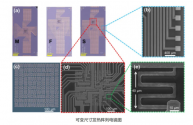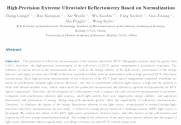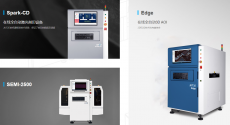Professor Wang Wei's team from the School of Integrated Circuits, Peking University, the National Key Laboratory of Micron and Nano Processing Technology, and the High-Precision Innovation Center for Integrated Circuits proposed a double "H" manifold embedded microchannel heat dissipation solution
With the widespread application of a new generation of wide bandgap semiconductor materials represented by GaN, the performance of power devices has been greatly improved. However, due to the limitations of device thermal management performance, GaN power devices can only achieve 20% to 30% of their theoretical performance. Embedded microfluidic cooling technology integrates microfluidics inside the device, avoiding almost all external thermal resistance, and uses direct convection heat transfer of the fluid to complete efficient heat transport. Therefore, it has a strong heat dissipation capability and is considered to be one of the key technologies most likely to break through the thermal management bottleneck in the future. However, the device structure of actual electronic devices is mostly a composite structure with more than two layers, and the heat generation mode also shows a multi-size trend, which poses a great challenge to the design and preparation of the heat sink. In thermal design, it is necessary to systematically analyze the thermal resistance composition in the actual device heat dissipation path and reduce the key thermal resistance.
To address this key issue, Professor Wang Wei's team from the School of Integrated Circuits of Peking University, the National Key Laboratory of Micron and Nanofabrication Technology, and the Advanced Innovation Center for Integrated Circuits proposed a double "H" manifold embedded microchannel cooling solution. At the same time, they integrated a scale-adjustable heating array on the microchannel radiator and tested the heat dissipation performance of the microchannel radiator for heat sources of different sizes under different operating modes.
After actual measurement, the heat flux density of the microchannel heat sink for a 500 × 500 μm2 heat source reached more than 1200 W/cm2, the average temperature rise was less than 60 °C, and the convection heat transfer coefficient reached 1.5×105 W/(m2?K). In addition, this work also constructed a heat-flux coupling simulation and theoretical model based on experimental data, and systematically summarized the changes in heat sink thermal resistance, one-dimensional conduction thermal resistance, and diffusion thermal resistance in typical structures of electronic devices in multiple scenarios. The study found that when the substrate size is fixed, the change in the size of the hot spot from small to large will cause the main thermal resistance in the device to change from diffusion thermal resistance to heat sink thermal resistance. Therefore, different heat dissipation methods need to be adopted for point heat sources and surface heat sources according to the change trend of their main thermal resistance.






